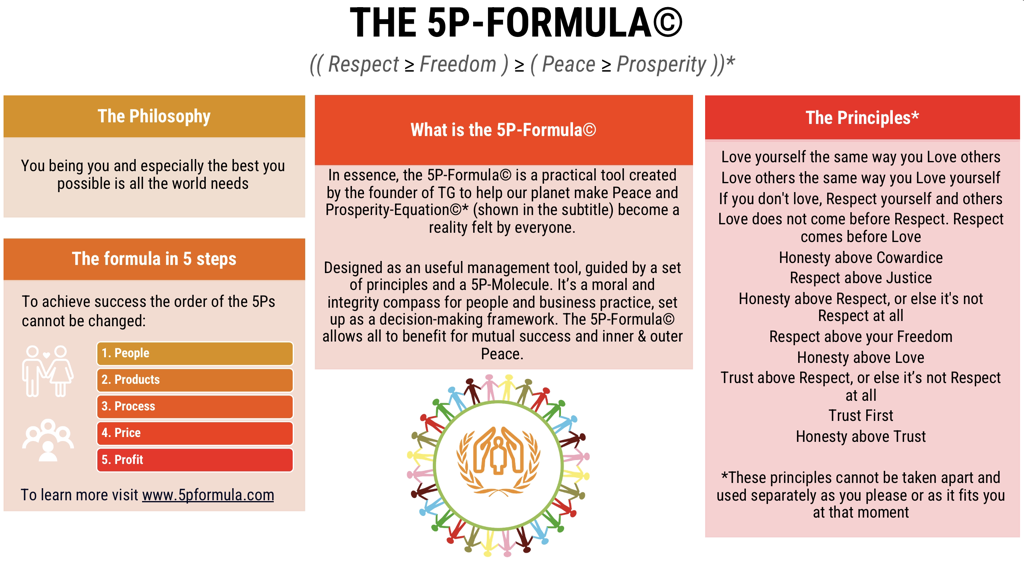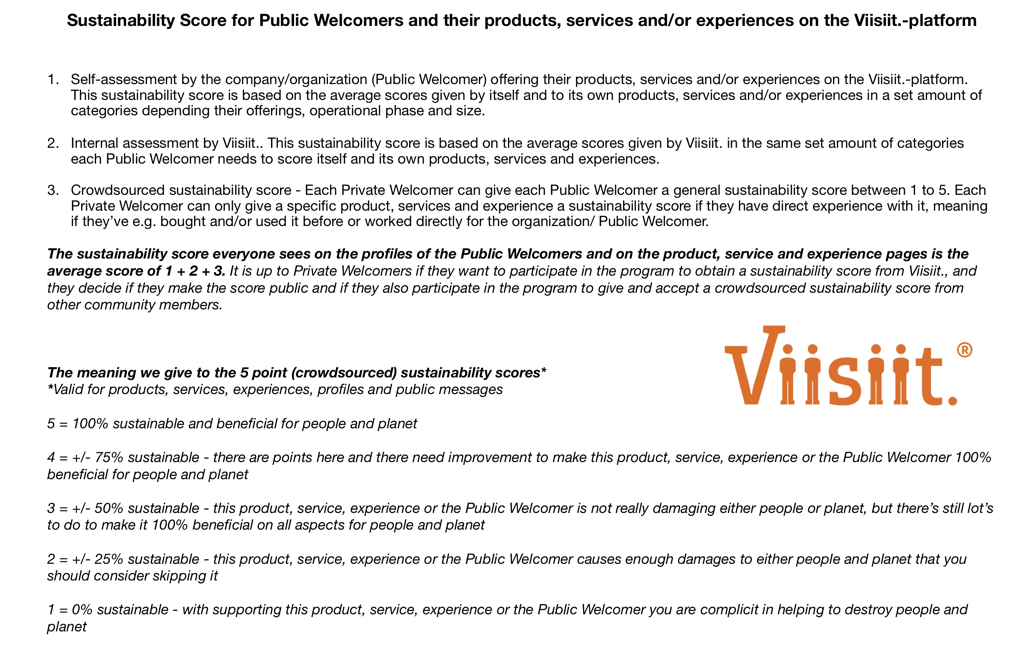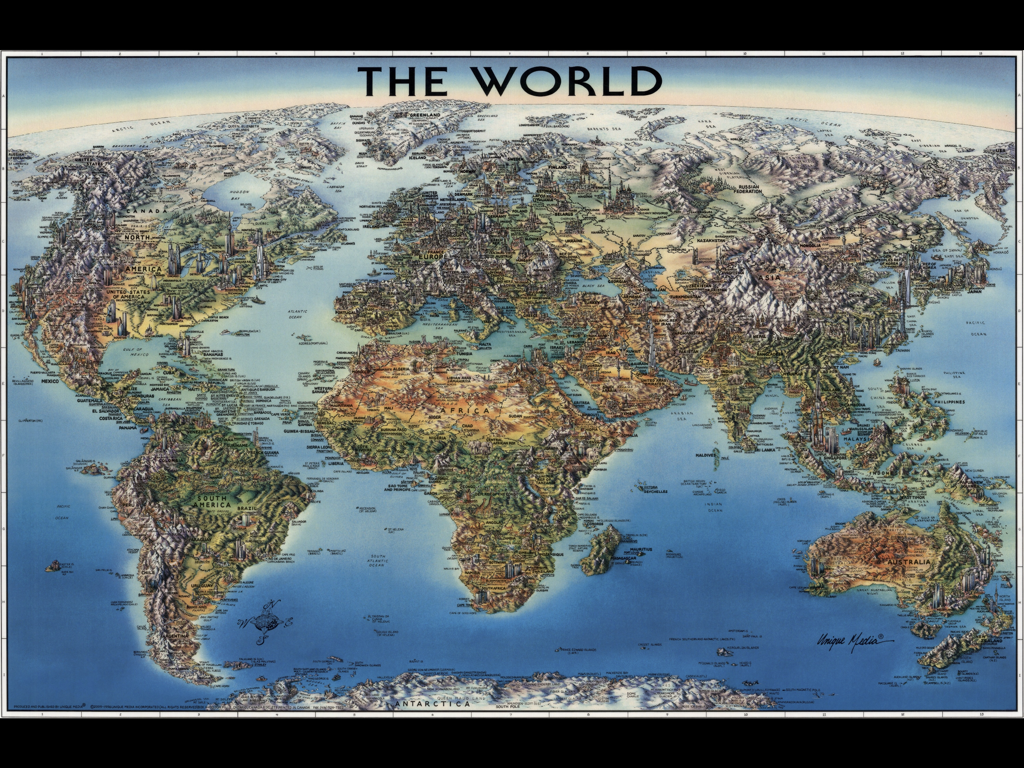Ecological Sustainability and Social Sustainability are mutually exclusive concepts because a product, service, experience and even you as an individual or organizations as a collective can act and be functioning ecologically sustainable, but not (fully) social sustainable, or vice versa, or you can be functioning both (fully) ecologically and socially sustainable, or not be functioning ecologically and socially sustainable (at all).
Concrete examples of these 4 scenario’s are;
1. Banning all commercial and cargo airplanes from flying if they’re burning fossil fuel is the most ecological sustainable thing to do for the planet, but because of not having better aviation alternatives the economical and social revolt this will cause makes it that no sensible government would even entertain the idea to go implement this at present times. Of course, not tackling the pollution in the aviation industry is also not social sustainable, so I think this is a good example in the challenges we’re facing as a collective to find a proper balance in being both ecological sustainable and social sustainable.
2. A health-coach helping a client is a service that’s fully social sustainable, but if the health-coach travels each week in a diesel or gas car going 100km back and forth to the house of the client, while also doing for example massages with scented palm oils with oils sourced from deforested places and buys on the way each time at the tankstation a plastic water bottle that’s on top of being from plastic, also produced by a corporation extracting water from communities and nature without paying their fair share. Then this health-coach is providing a social sustainable service that’s not being (fully) ecological sustainable.
3. An example of a true 100% ecological sustainable and 100% social sustainable product, service, experience, person or organization is really hard to find, and one could argue maybe even impossible to achieve in present times. Even Greta Thunberg bought or used (and probably in the future will buy or use at least once more) something manufactured with (child) slave labor and ate something (with an ingredient) sourced from deforested places, it’s unfortunately inevitable in the current global supply chain. I challenge anyone to write a comment with a product, service, experience, person or organization they believe at this moment is 100% ecological sustainable and 100% socially sustainable, I simply can’t.
4. Same goes for the combination of true 0% ecological sustainable and 0% socially sustainable, I simply can’t think of one product, service, experience, person or organization which/whom I could confidently say they are 0% of both. You can argue that oil extraction is 0% ecological sustainable, but I still need to find the person that can provide proof that it’s also 0% socially sustainable. If you think you can defend oil being 0% socially sustainable or you have an example of something (or someone or an organization) being 0% socially sustainable, please share you thoughts with me know in the comments below.
To expand on my last point, the problem with the oil extraction is the greed at which we as humans are consuming it, because probably in 100 or more years we as a global society would still need at least a few crucial things that can only be produced using that crude oil we are extracting and consuming by the millions of barrels a day. At the pace of consumption and with a growing population, will there be any oil left in the ground in 50 years? With technological advances we might be able to create crude oil from algae in production plants, but will these advances come fast enough at scale for us to completely stop damaging our planet? That extracting oil is still not being priced and taxed as the 0% ecological sustainable product it is, is truly bizarre in 2021 because much of it is being consumed for “pleasure” and “gluttony” and so on the other hand it’s definitely also not 100% socially sustainable to keep it at these prices. In general people should not be able to afford spending gas to take their car only a few blocks away to a store to buy coffee and donuts.
In essence, same goes with (precious) metal mining. Without some (precious) metals most of us wouldn’t be able to have the laptop, tablet or phone they are currently using to read this blog. On top of this “production need”, there is a bigger social need for precious metals than there is a social need for crude oil. Gold and silver have been a store of wealth for more than 5000 years and they will stay being a store of wealth for millennia to come, simply because as biological beings holding something physical will always beat “holding” something digital. The reason for this is because, besides the mental energy it takes to decide to spend something that holds great value to you (being it a physical or digital asset), it takes a much greater physical energy to go spend the precious metal than it takes to spend digital assets. With digital assets, in most cases a few clicks and your done, with physical assets in most cases you even need to leave your house to go spend it. Same effect you get with people who want to get their spending habits under control, they create spending budgets and start using (physical) cash to make payments in shops, instead of using card payments. So if you ask me, between precious metals and crypto, what should you hold going into retirement? If you can, diversify and hold both, and if you don’t like to take too much risks you give more weight to precious metals. My hypothesis is that you will see that you will be more inclined and feel better selling your crypto (in times of financial need) than you would be selling your precious metals. That psychological effect precious metals have on us makes them perfect assets to hold wealth (especially in an inflationary economic system).

The point of the latter two paragraphs was to show that everything sits somewhere on a (ecological & social) sustainability scale. Without you knowing Dutch, you probably recognize those yellow stars telling you how bad or awesome that product (service, experience or store) is. One of my goals with Viisiit. is to make it so that shops will also start showing a (blue) sustainability score together with the yellow “general review” scores. I strongly believe in SDG #17 (Partnerships) and from the start my team and I will work to form partnerships with other startups and (more) established shops to integrate this on their (e-commerce) platforms too, but from the start we will introduce our own sustainability score based on the average of 3 scores given by separate groups. See the screenshot of the sustainability score for more detailed information on this.
Most people, from every generation, do want to do better for themselves and the planet, the only problem is that doing better for the planet for most people cannot come at the cost of personal convenience. This makes it that most people will not take the effort and time to go research how sustainably produced a product is before buying, even though if given the choice, they would choose to buy a more sustainably produced product, even when there’s a cheaper but less sustainable alternative to choose from. With Viisiit. we’re working hard to make it more convenient for consumers to assess the sustainability of their purchases.
For full disclosure, crowd-sourcing the sustainability score and the blue color for the sustainability score is not my idea, but I got inspired to incorporate these ideas in our service offering of Viisiit. by an article written by David Sarokin, titled: Five-star Sustainability: how to crowd-source our way to a better world. Before finding this article the plan was to only give a (green) sustainability score / stars to our Public Welcomers (or their product/service/experience offerings) based on their own self-assessment and our own internal assessment. Giving “the crowd” a voice in this actually makes a lot of sense and we need blue oceans and blue skies for a healthy planet, so making the stars blue actually also makes more sense. If interested, you can get the article at: https://www.researchgate.net/publication/318978563_Five-Star_Sustainability_How_to_crowd-source_our_way_to_a_better_world.
If you have any questions about what I wrote in this blog or you’re curious on something about Viisiit., you can e-mail me or just post your questions in the comment section below.
Follow the socials for updates about Viisiit.!





